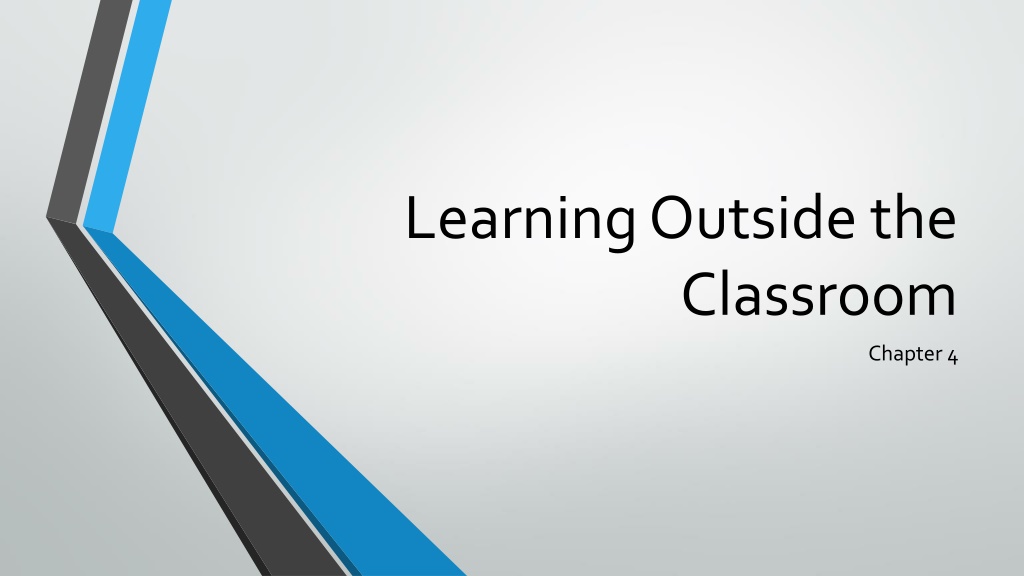Effective Learning Strategies Outside the Classroom
Understanding and applying academic information through active reading strategies are fundamental in college learning. Seven essential learning methods include reading textual sources, solving problems, writing, case studies, individual projects, collaborative learning, and academic networking. Structured reading techniques like forethought, pacer, sectioning, and marking help improve comprehension. Overcoming blocks to good reading, such as vocabulary issues and lack of concentration, is crucial for effective learning.
Download Presentation

Please find below an Image/Link to download the presentation.
The content on the website is provided AS IS for your information and personal use only. It may not be sold, licensed, or shared on other websites without obtaining consent from the author. Download presentation by click this link. If you encounter any issues during the download, it is possible that the publisher has removed the file from their server.
E N D
Presentation Transcript
Learning Outside the Classroom Chapter 4
Essential Question: Which methods of learning academic information is appropriate and useful for you? Which types of active reading strategies fit differing academic text? Outside of class, what methods should you use?
Understanding, not memorizing, is the foundation of college learning. Study to apply the mind so as to acquire understanding and knowledge
There are Seven Essential Learning Methods Seven Methods of Learning Reading Textual Sources Solving Problems Writing Case Studies Individual Projects Collaborative Learning with Peers Academic Networking
Learning from Textual Sources Academic Reading: Reading for understanding rather than for personal information or entertainment.
Structured Reading Forethought Performance Phase Reflection Concentration Comprehension Monitoring Pacer Sectioning Marking Text Vocabulary
Structured Reading Method Forethought: Plan and prepare Look over the reading Read the summary at the beginning or ending, What primary question is it answering? Based on personal knowledge, how deeply should you read?
Reading Strategies The Pacer Technique use your finger or notecard or both to keep focused Sectioning Set goals on the amount you read Marking the Text Think Avid Comprehension Monitoring
Blocks to Good Reading Vocabulary Concentration P. 70 Self-check
There are Seven Essential Learning Methods Seven Methods of Learning Reading Textual Sources Solving Problems Writing Case Studies Individual Projects Collaborative Learning with Peers Academic Networking
The Other Six Problem Solving Math and physics are most commonly solved this way Writing Most college writing is about formulating an argument and defending it Individual Projects Case Studies higher thinking skills such as analyzing Peers Group projects, tutoring, study groups Academic Networking using social media to network with peers, instructors, and support service to improve academic performance
Mid-Semester Assessment October 11

 undefined
undefined






















